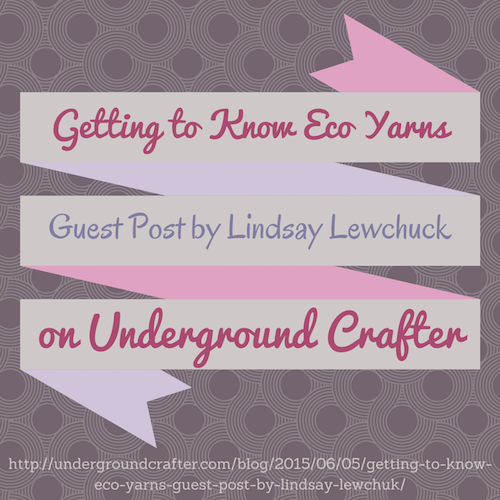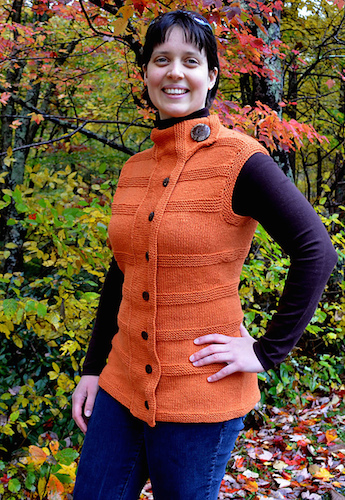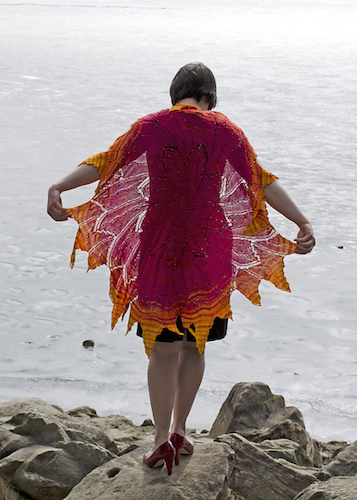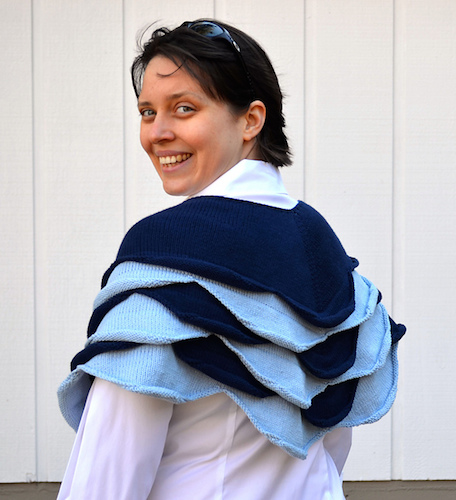Today, I’m sharing a wonderful guest post by Lindsay Lewchuk, the knitting designer and maker from Knit Eco Chic, as part of a celebration of World Environment Day (WED). If you’re not familiar with WED, you can find information on the United Nations website.
 Lindsay is an expert in eco yarns who began knitting in earnest while hospitalized about a decade ago. Her medical condition limited her to the use of organic cellulose fiber yarns and bamboo needles, and she’s going to tell us more about them today!
Lindsay is an expert in eco yarns who began knitting in earnest while hospitalized about a decade ago. Her medical condition limited her to the use of organic cellulose fiber yarns and bamboo needles, and she’s going to tell us more about them today!
You can find Lindsay on the Knit Eco Chic website and blog. She is also on Ravelry (as KnitEcoChic, in the Knit Eco Chic group, and on her designer page). Lindsay has both an Etsy shop and a growing EcoHabitude shop where she sells both patterns and hand knits using organic, natural, or sustainable yarns. Lindsay is KnitEcoChic on both Pinterest and Twitter, and you can join her mailing list here. And, in case you are also a fan of Puddles, her Great Dane, you can find his Facebook page here.
All images are copyright Lindsay Lewchuk and used with permission.
This post contains affiliate links.
Getting to Know Eco Yarns
Guest Post by Lindsay Lewchuk

Knitters and crocheters are the most caring people. Honestly, you aren’t going to spend 5-105 hours stitching if you didn’t care about what you are creating and who you are creating it for. This same care is an excellent scope in which to approach eco knitting/crocheting.
Eco knitting/crocheting is consciously selecting yarn and tools based upon whether or not they are good for the ecosystem. It is caring about the lives of the individuals who went into making the yarn and tools you utilize in your crafting and caring about the health of the planet for future generations. There are many ways which this applies. The three Rs (reduce, recycle, reuse) focus on limiting the harvesting of new material or selecting readily renewable material. Selecting local material reduces your carbon footprint. Selecting socially responsible or fair trade material helps support your fellow human who had a hand in the production.
Another option is selecting organic and/or low impact or eco-dyed yarn, which reduces the chemicals used in the production, thus making it healthier for you (the crafter) as well as the final recipient, and the ecosystem in which it is grown and produced (including the workers).
Organic cotton is cotton unadulterated by science.

In 2008, global cotton production used almost 7% of all pesticides (including defoliants, herbicides, and insecticides), 5% of the world’s herbicides, and 16% of the world’s insecticides in terms of sales. The US Environmental Protection Agency considers seven of the top 15 pesticides used on cotton in 2010 in the United States as ‘possible,’ ‘likely,’ ‘probable,’ or ‘known’ human carcinogens (acephate, 1, 3-dichloroproene, diuron, s-metolachlor, pendimethalin, tribufos, and trifluralin). (Source: Organic Trade Association, “Cotton and the Environment.”)
Your skin is like a sponge absorbing constantly. By selecting organic yarns for your knitting and crochet, you prevent those chemicals used in non-organic yarn production from leaching into your own person, as well as into the final wearer of the knitted/crocheted object and the people who grow the fiber.

Here are three tips for identifying eco yarn
- Identifying whether or not the yarn you select at your local yarn shop (LYS)* is an eco yarn is as easy as reading the yarn label. Look for words like “organic,” “vegan/ natural dyes,” or “low-impact dyes,” or on animal fibers “humane,” “GOTS certified,” or “virgin.”
- Curious to learn more about the yarn you picked? Head to the Internet. In this technological age, most companies will have websites. Check out the “About” page. Yarn makers love to tell you how they are working to be environmentally and/or socially conscious in their manufacturing processes.
- Finally, ask around for reviews from LYS owners and other knitters/crocheters.
Thank you, Marie, for allowing me to guest post.
In closing, what are your favorite eco yarns and tools?
*This is Marie again! I just wanted to share that Lindsay’s local yarn shop, Yarn Attic LLC, is a 2 hour trip – in each direction! – from her home! Wow, that is love for a local yarn shop!
If you shop at a “big box” store for your yarn, you may want to try out Lion Brand’s Fettuccini (upcycled from garment manufacturing) or Nature’s Choice Organic Cotton.
Thanks so much, Lindsay, for sharing this information with us and stopping by today! If you enjoyed this guest post, follow my growing Eco Yarns board on Pinterest!


3 thoughts on “Getting to Know Eco Yarns: Guest post by Lindsay Lewchuk”